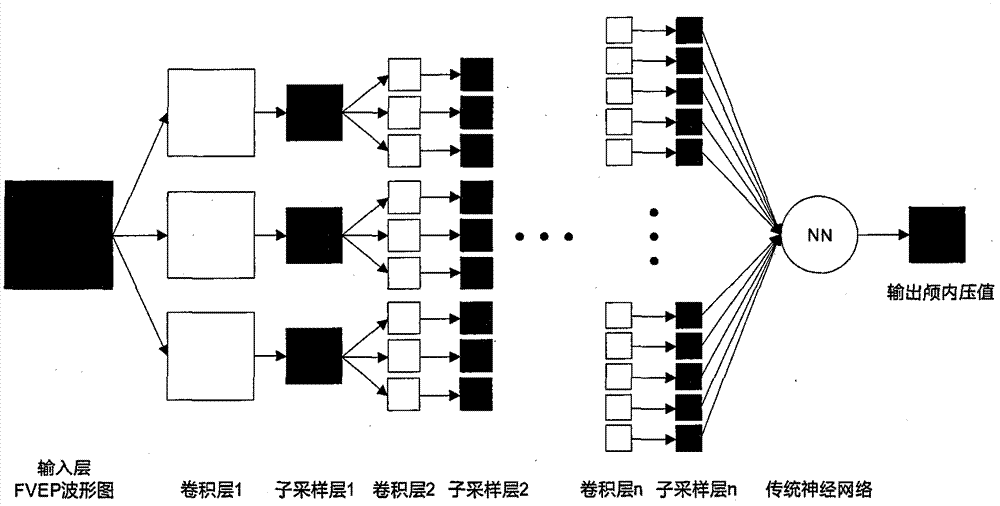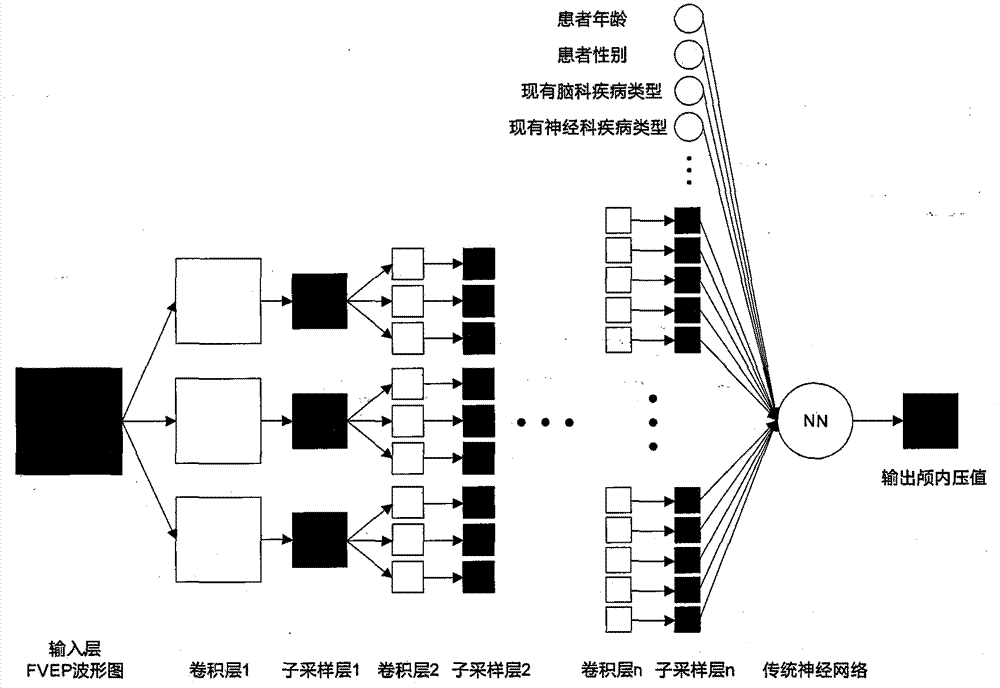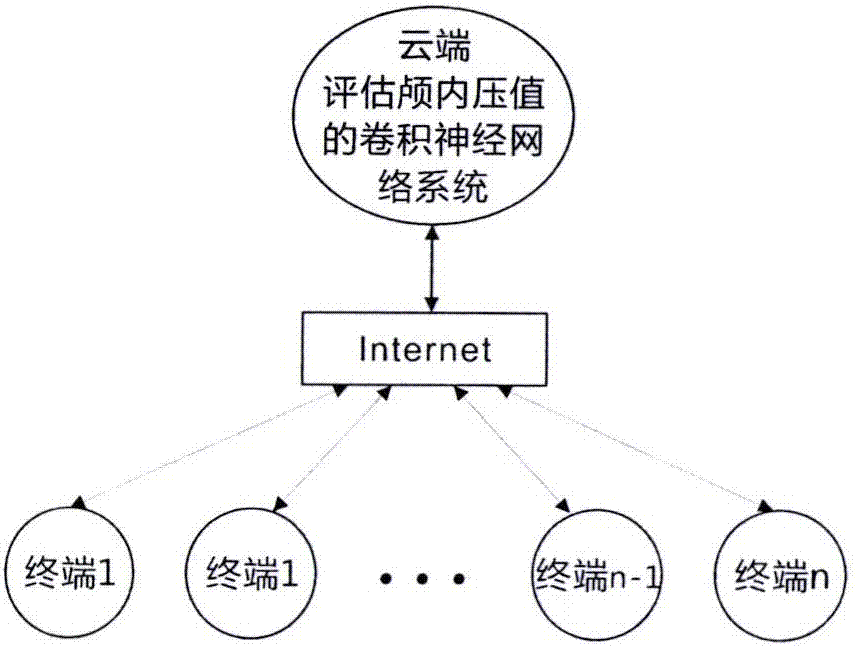Method for monitoring intracranial pressure based on convolutional neural network algorithm
A convolutional neural network, intracranial pressure technology, applied in the field of neurosurgery, can solve the problems of limiting the accuracy of FVEP, complex relationship, unfavorable measurement accuracy, etc. Effect
- Summary
- Abstract
- Description
- Claims
- Application Information
AI Technical Summary
Problems solved by technology
Method used
Image
Examples
Embodiment Construction
[0036] The preferred embodiments of the present invention will be described below in conjunction with the accompanying drawings. It should be understood that the preferred embodiments described here are only used to illustrate and explain the present invention, and are not intended to limit the present invention.
[0037] A method for monitoring intracranial pressure based on a convolutional neural network algorithm, comprising the following steps:
[0038] S1: Detect the actual intracranial pressure value through FVEP non-invasive intracranial pressure monitoring technology, and form FVEP waveform;
[0039]S2: Construct a convolutional neural network, and use the actual intracranial pressure value measured in step S1 as a result, continuously train it to learn the actual FVEP waveform corresponding to different intracranial pressure values, and comprehensively consider various external factors that affect intracranial pressure Factors are commonly used as the input of the con...
PUM
 Login to View More
Login to View More Abstract
Description
Claims
Application Information
 Login to View More
Login to View More - R&D
- Intellectual Property
- Life Sciences
- Materials
- Tech Scout
- Unparalleled Data Quality
- Higher Quality Content
- 60% Fewer Hallucinations
Browse by: Latest US Patents, China's latest patents, Technical Efficacy Thesaurus, Application Domain, Technology Topic, Popular Technical Reports.
© 2025 PatSnap. All rights reserved.Legal|Privacy policy|Modern Slavery Act Transparency Statement|Sitemap|About US| Contact US: help@patsnap.com



